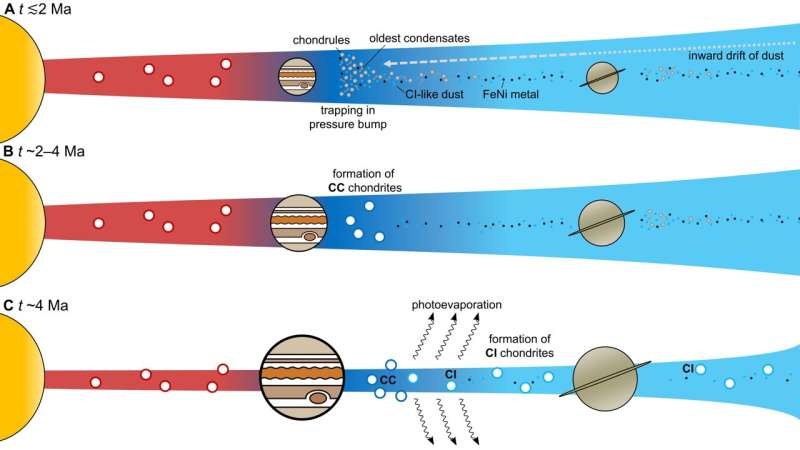New research suggests that the carbon-rich asteroid Ryugu, previously thought to have originated from beyond Saturn’s orbit, may have formed much closer to the Sun, near Jupiter’s domain. This unexpected finding challenges our understanding of how such asteroids are formed and could have significant implications for our knowledge of the solar system’s early history.

Defying Expectations: Ryugu’s Surprising Origins
Until now, scientists thought that the near-Earth asteroid Ryugu made its way to Earth just beyond the orbit of Mars from the farthest reaches of the solar system. But a new study tells a different story.
But the new research, published today in Science Advances, suggests Ryugu might have formed far closer to the Sun specifically between where Earth currently is located and Jupiter’s orbit. Such a conclusion challenges earlier suggestions that Ryugu and other carbon-rich asteroids, similar to it, formed just outside Saturn’s orbit.
But the smoking gun is the nickel isotopic composition of samples returned from Ryugu via the Japanese Hayabusa2 mission. This is consistent with a closer relationship to Ryugu being part of the rare CI chondrite family of meteorites, and while not necessarily originating in the same place, at least forming by very similar processes.
Unraveling the Secrets of Carbonaceous Chondrites
CI chondrites, and indeed carbonaceous chondrites in general, have been the best candidates for samples of the most pristine and least perturbed material in our solar system. The idea is that they started their travels in the farthest reaches of our solar system, and therefore offer a special view into those origins.
But this fresh research contradicts that long-standing view. They suggest that Ryugu and the CI chondrites may have formed well within Jupiter’s orbit, in a so-called ‘grand tack’ region held to be determined by gravitational shifts of the giant planet.
Carbonaceous chondrites formed in the first two million years after the solar system was born, by the reckoning of Paul and others. When dust and small agglomerations fell into the Sun’s gravity well, they ran headlong into Jupiter-centric speed bumps. Above the orbit of Jupiter, however, these larger and heavier elements could accumulate and merge to form the carbonaceous chondrites that we all know and love (or at least recognize) — complete with the inclusions found within those meteorites.
Afterward, as the original gas disk of the Sun disappeared, a second process was responsible for creating the dust and iron-nickel grains that are major constituents of CI chondrites such as Ryugu.
Conclusion
The study of Ryugu made think that Ryugu and CI chondrites were from the same cultural region where they originated [about 60 million years ago depending on astronomical composition], but two may have formed by different processes, overturning traditional ideas for origins. This fresh insight could be important broadly for our capabilities in the early solar system, as well as our ideas of how planets and other objects originated. In the words of the study’s authors, these results illustrate how “a combination of high-precision laboratory measurements and modeling can shed light on a very complex history of our solar system.”
